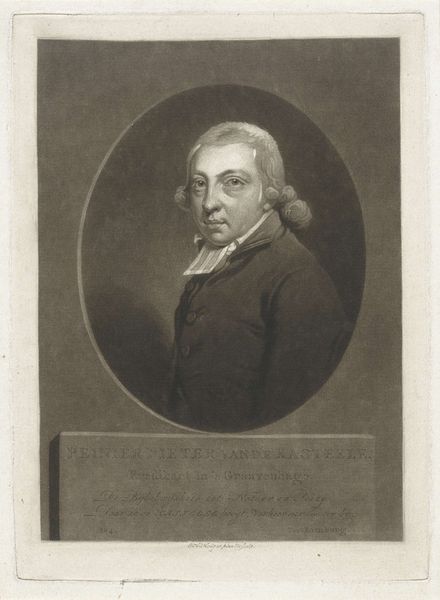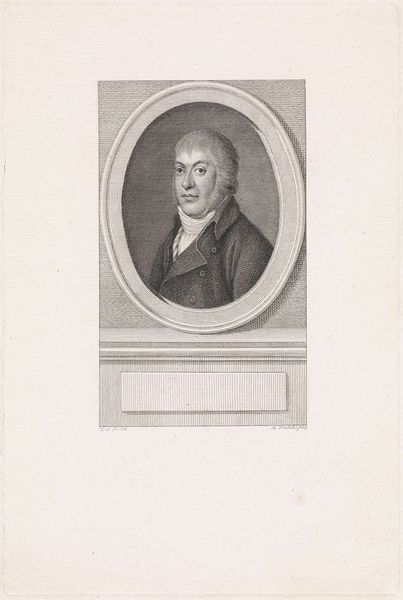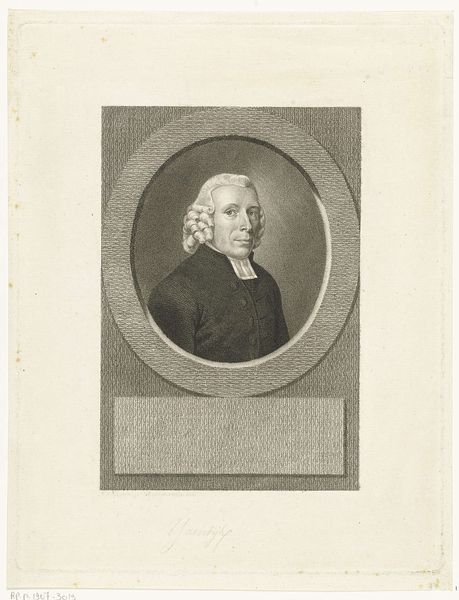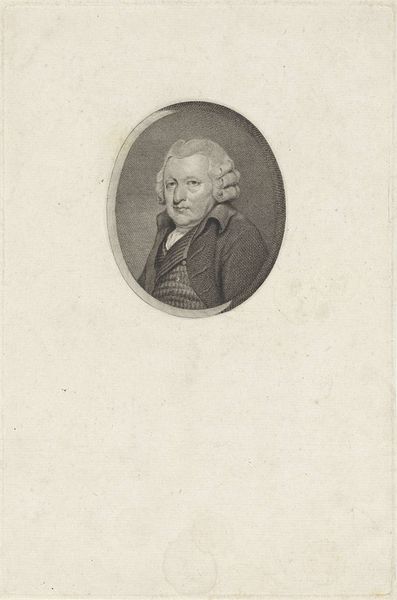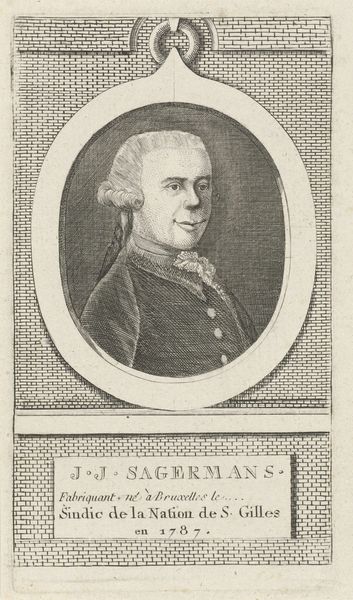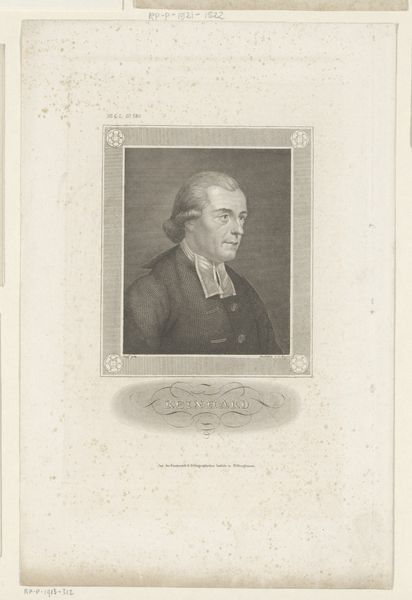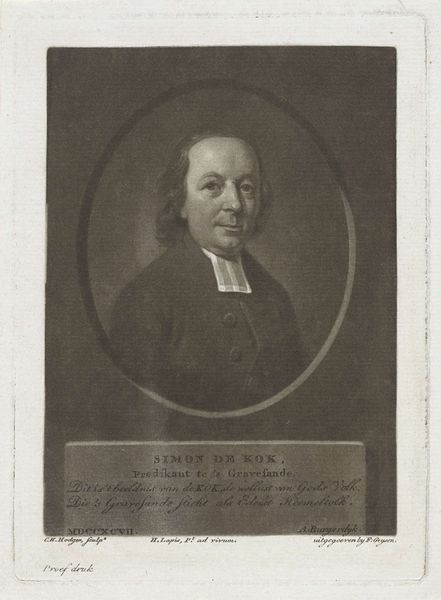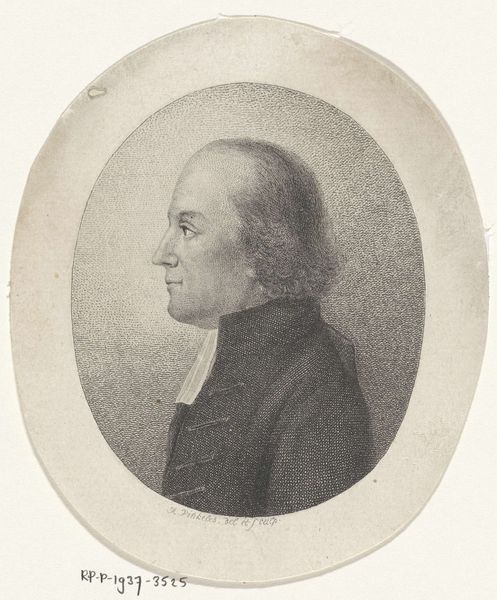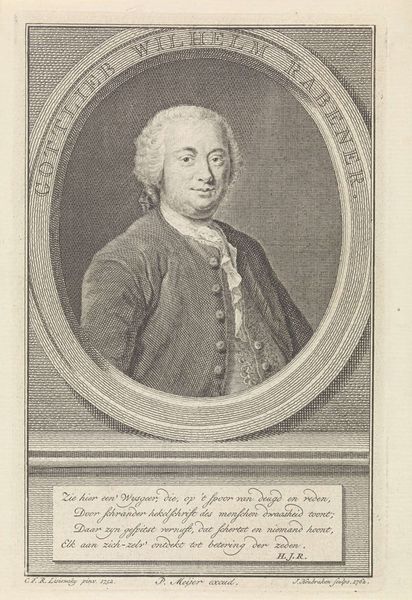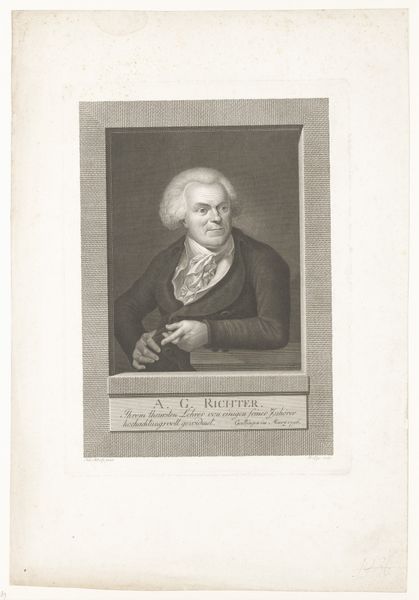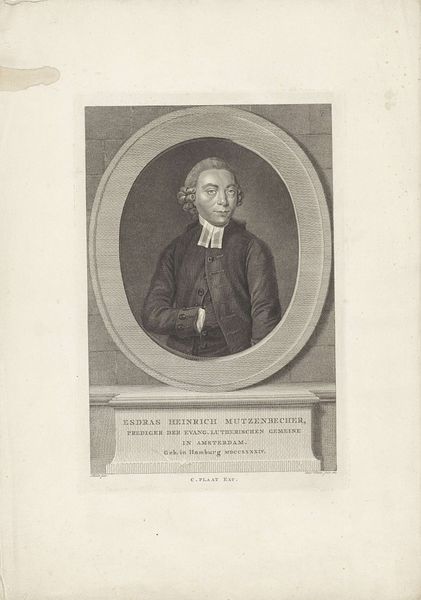
engraving
#
portrait
#
neoclacissism
#
19th century
#
engraving
Dimensions: height 207 mm, width 149 mm
Copyright: Rijks Museum: Open Domain
Charles Howard Hodges created this portrait of Wilhelm Leendert Krieger in 1796 using the technique of mezzotint. This printmaking process is an indirect method, which relies on a metal plate that has been systematically roughened to create tone. The tonal gradations you see here, from light to dark, are achieved by selectively burnishing or scraping away the burr to varying degrees. The labor-intensive process of preparing the plate allows for a wide range of shading and fine detail, evident in the soft texture of Krieger’s hair and the subtle modeling of his face. The mezzotint technique, popular in the 18th century, allowed for the relatively easy reproduction of images, playing an important role in disseminating portraits and other artworks to a wider audience. It sits at the intersection of craft and industry, demanding skilled handwork, but ultimately serving a proto-industrial function by producing images for a growing consumer market. Considering these conditions, the proliferation of portraiture, like this one, reflects the changing social and economic landscape of the time.
Comments
No comments
Be the first to comment and join the conversation on the ultimate creative platform.

